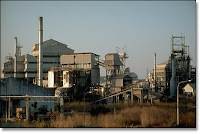IN THIS DECADE of disasters, both natural and man-made, it behooves us to remember the 1984 Bhopal tragedy in India which killed more than 20,000 people and whose aftereffects continue to destroy the health of thousands. In terms of human lives lost, it is considered the world’s deadliest industrial catastrophe, and it could have been prevented. It was one of the worst ecological disasters in history, rivaling Chernobyl in Russia.
Now, 25 years after that lethal gas leak, an Indian court has sentenced seven former top managers of the US-owned Union Carbide pesticide factory to two years in prison. According to an Agence France Presse report, the company executives were originally charged with culpable homicide but, to the outrage of survivors and victims, the Supreme Court in 1996 reduced the charges to death by negligence with maximum imprisonment of just two years.
There is little to rejoice over in this verdict.
The Bhopal local government had also charged Union Carbide’s CEO Warren Anderson with manslaughter and, if convicted, he could serve 10 years in prison. Warren evaded international arrest and a summons to appear before a US court. Extradition moves were unsuccessful. In Aug. 2002, Greenpeace found Warren living a life of luxury in the Hamptons. He was not included in the recent verdict because he was considered an absconder.
Many of the youth of today and the future might not know about Bhopal because the tragedy is not likely going to make it to the textbooks. Does it not qualify as a historical entry like the 79 A.D. Mt. Vesuvius eruption that buried Pompeii? Will our own 1991 Ormoc mudslide that killed thousands in a blink of an eye make it to our error-ridden textbooks (which are a huge disaster in themselves)? And didn’t we see a likeness of Ormoc in last year’s “Ondoy” and “Pepeng” disasters? And not to forget the Marcopper mine disaster that poisoned the province of Marinduque.
I wrote about Bhopal years ago. Here’s a flashback. On the night of Dec. 2 and early morning of Dec. 3, 1984, a Union Carbide plant began leaking some 27 tons of methyl isocynate (MIC), a deadly gas. According to The Bhopal Medical Appeal and Sambhavna Trust that espouses the cause of victims, none of the six safety systems designed to contain that kind of a leak was operational and soon the gas began to spread throughout the city.
An estimated half a million people were exposed to the gas and 20,000 have so far died as a result of this. More than 120,000 continue to suffer ailments such as blindness, breathing problems, and reproductive disorders.
In 1999, Greenpeace reported that chemicals causing cancer, brain damage and brain defects were found in the water at the accident site. These were in extremely high levels, that is, several million times higher. Trichloroethene, known to impair fetal development, was found at levels 50 times more than the accepted safe limits.
A 2002 testing report revealed that poisons such as 1, 3, 5 trichlorobenzene, dichloromethane, chloroform, lead and mercury were present in the breast milk of nursing women.
At that time Michigan-based Dow Chemical which purchased Union Carbide and acquired its assets in 2001 was said to have steadfastly refused to clean up the site, provide safe drinking water, compensate the victims or disclose the composition of the gas leak which doctors need to know in order to treat the victims. It was supposed to be a “trade secret.”
Union Carbide had stuck to the figure of 3,800 victims. But according to reports, “municipal workers who picked up bodies with their own hands, loading them onto trucks for burial in mass graves or to be burned on mass pyres, reckon they shifted at least 15,000 bodies. Survivors, basing their estimates on the number of shrouds sold in the city, conservatively claim about 8,000 died in the first week. Such body counts become meaningless when you know that the dying has never stopped.”
The Bhopal Union Carbide pesticide factory seemed problematic since the time it was built in the 1970s. India seemed, at first, a huge market for pest control products. It did not turn out that way. The poor farmers, who constantly battled with droughts and floods, could not afford them. The plant never reached its full capacity and ceased active production in the early 1980s.
As reports went, a great quantity of chemicals remained there while the plant’s safety system was allowed to deteriorate. Management thought that since the plant had ceased production, there was no threat. They were wrong.
Here was how it started: “Regular maintenance had fallen into such disrepair that on the night of Dec. 2, when an employee was flushing a corroded pipe, multiple stopcocks failed and allowed water to flow freely into the largest tack of MIC. Exposure to this water soon led to an uncontrolled reaction; the tank was blown out of its concrete sarcophagus and spewed a deadly cloud of MIC, hydrogen cyanide, mono methyl amine and other chemicals that hugged the ground. Blown by the prevailing winds, this cloud settled over much of Bhopal. Soon, thereafter, people began to die.”
In 1989, Union Carbide, in a partial settlement with the Indian government, paid some $470 million in compensation. The victims were not part of the negotiations and many felt cheated by the $300 to $500 each received. It could not cover many years’ of medical treatment.
About 50,000 injured Bhopalis could no longer return to work or move freely about. Many have no one to look after them because their next of kin had all died.
Bhopal should never happen again.









